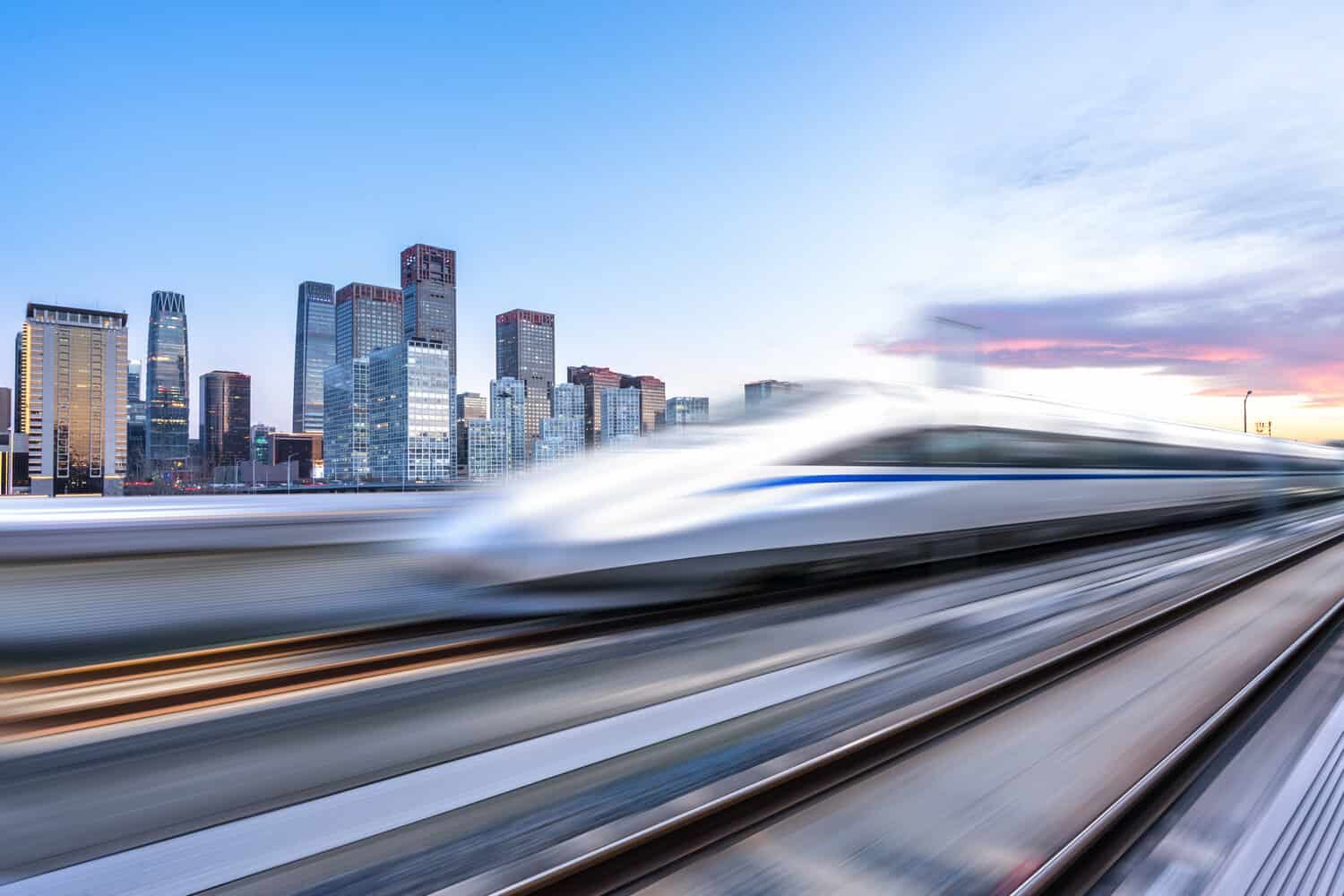
Across the years, trains have been one of the most popular forms of transportation in the entire world and, at least in some parts of the planet, they have kept pace with the rapid rise in technology.
Today’s most advanced trains reach incredible speeds over land and even under water, getting their passengers to their destination faster than ever. These high speed trains have a big impact on the way we travel, making countries and even the world smaller and smaller.
Cutting edge engineering and innovative technologies now allow building trains capable of exceeding 200 mph, which is quite a feat, especially when you think that even most cars aren’t able to reach those speeds.
The countries that employ such trains have managed to make long distance commuting a reality for their citizens.
These high speed trains have revolutionized the transportation sector and we’ll most likely see even bigger changes in the future, with the evolution of more powerful engines, more aerodynamic designs, and impressive technical developments.
From the incredible Shanghai Maglev in China that can reach speeds in excess of 400 km/h, to the world famous TGV in France, these are the 15 fastest trains in the world right now.
15. Eurostar (France/UK) – 300 km/h / 190 mph
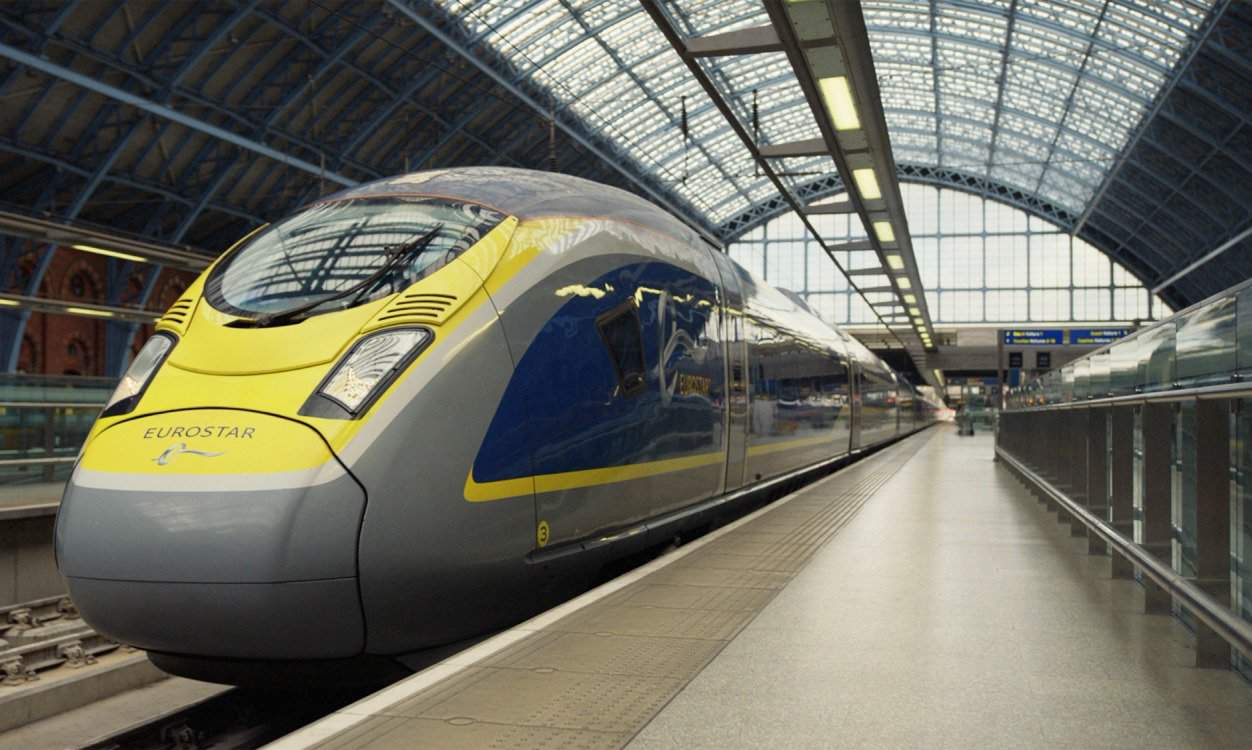
The Eurostar is a modified version of the iconic TGV, with a more elongated cabin, capable of traveling at a speed of up to 300 km/h (190 mph). They connect the United Kingdom with France, Belgium, and the Netherlands, passing through the iconic Channel Tunnel that links France and UK.
Though known primarily for the connection between UK and continental Europe, Eurostar trains operate all the way to the south of France, in Marseille.
When it comes to speed records, one of these Eurostar trains, operated by the British, reached a speed of 334.7 km/h (208 mph).
14. Haramain Western Railway Talgo 350 SRO (Saudi Arabia) – 300 km/h / 190 mph
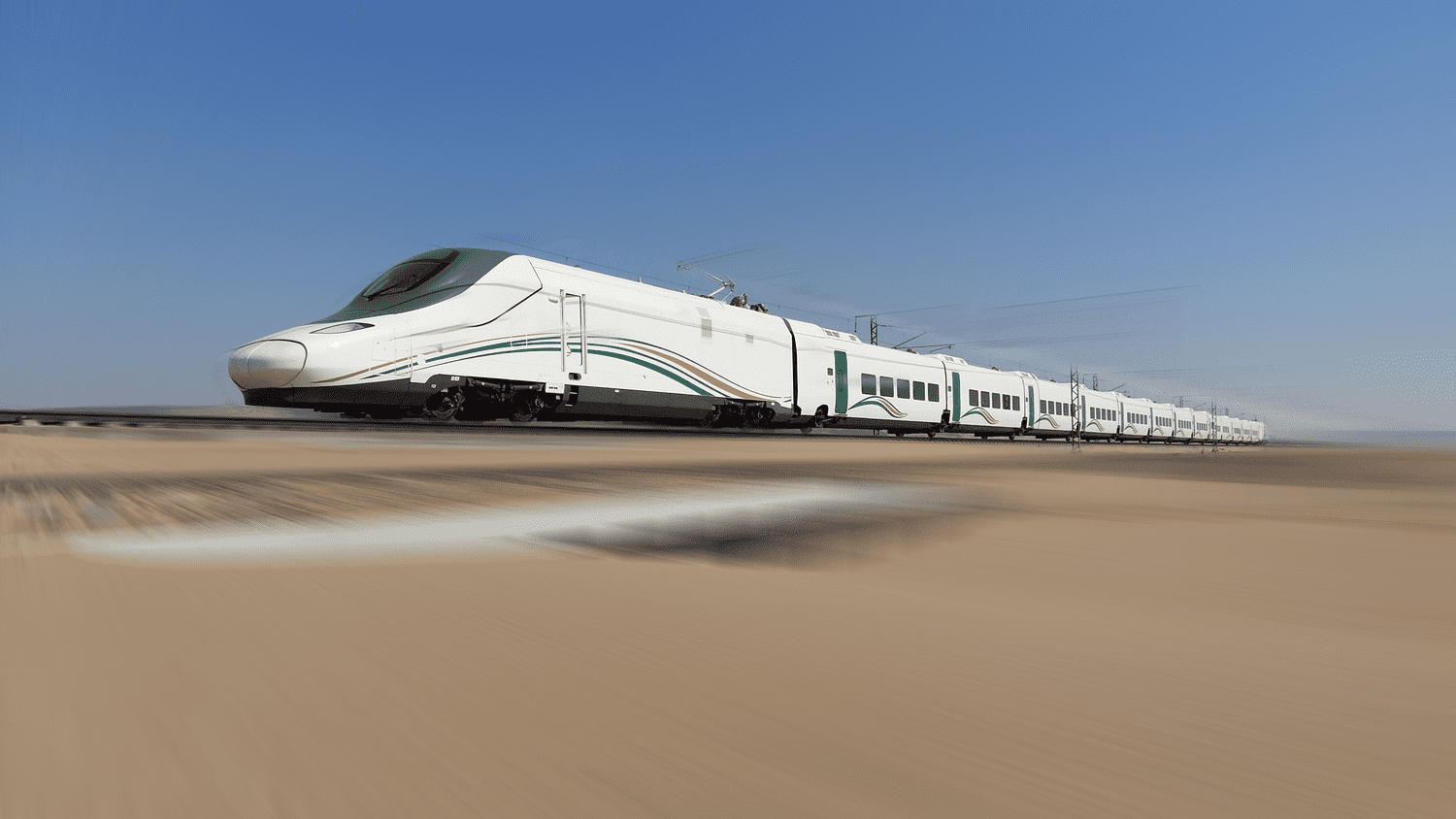
Though many wouldn’t associate the sandy environment of Saudi Arabia with high speed trains or trains in general, the Talgo 350 SRO on their Haramain High Speed Railway, also known as the Western Railway, does carry passengers between the holy cities of Mecca and Medina at impressive speeds as high as 300 km/h (190 mph).
The 35 trains used on this route are Spanish at their origin, but modified to withstand the extreme operating temperatures of the desert of up to 50 Celsius, or 122 Fahrenheit. Annually, there’s up to 60 million passengers traveling in these high speed trains, with one particular high during the yearly pilgrimage to Mecca.
13. Al Boraq TGV Euroduplex (Morocco) – 320 km/h / 200 mph
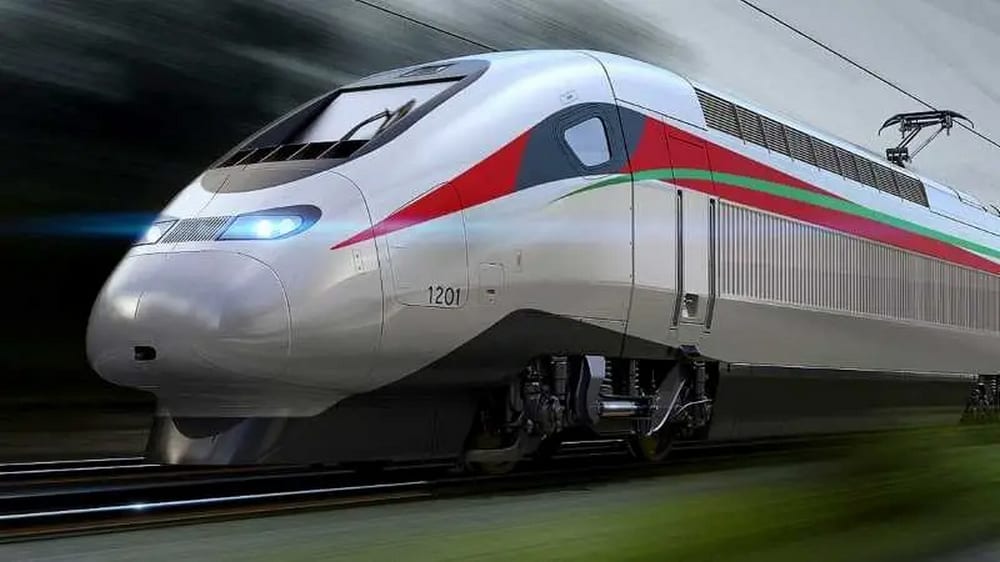
Again, Morocco is another country where most people wouldn’t expect high speed trains like, let’s say, in France. The thing is they do have similar TGV trains, built in France, the Euroduplex, modified for the conditions in Morocco.
Connecting the cities of Tangier and Kenitra, the Al Boraq railway service, in its inception phase, runs these trains on a 116 mile line, with speeds of 320 km/h (200 mph).
The Al Boraq railway project will span to an entire network of lines totaling to about 1,500 km, or 930 miles. This railway also holds the African rail speed record, 357 km/h (222 mph), achieved with one of those French built trains.
12. Shinkansen E5 Series (Japan) – 320 km/h / 200 mph
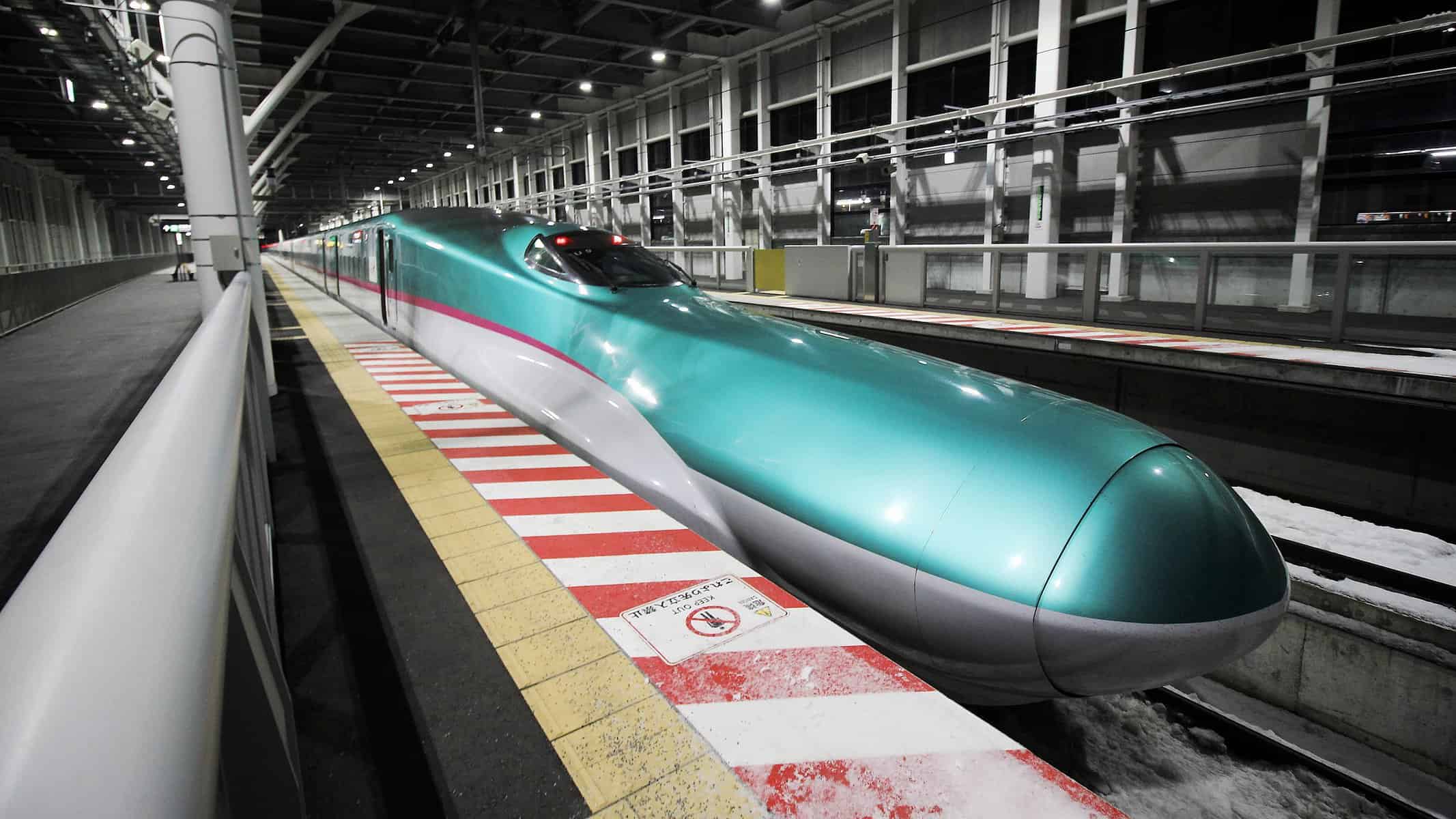
The Japanese Shinkansen E5 Series of trains is an interesting sight when spotted from the front. Its long nose that somewhat resembles the nose of a duck, is designed to reduce the sonic boom inside tunnels.
These trains reach speeds of up to 320 km/h and run from Tokyo to Shin-Aomori, on the Tohoku Shinkansen railway. Each of these trains is powered by 32 electric induction motors, which amount to a whooping 12,900 horsepower. Among other notable features is the aluminum alloy they’re constructed from and the active suspension that allow turning at such high speeds.
There are several other Shinkansen trains in Japan, reaching speeds of up to 300 km/h, but only the E5 variant exceeds those in operation.
11. Korail KTX I (South Korea) – 330 km/h / 205 mph
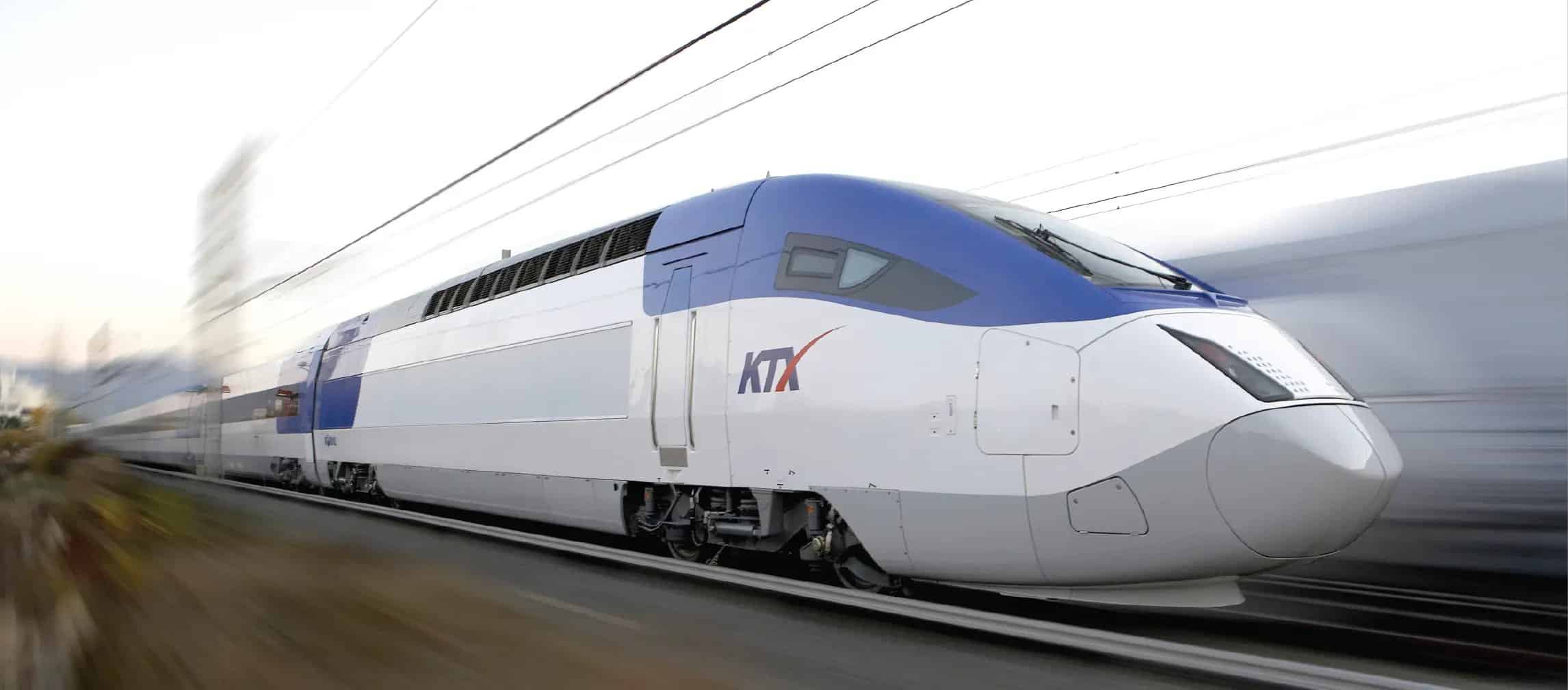
Korail KTX is South Korea’s high speed railway network, a project that began in 2004 and continues to expand, shortening the time it takes to cross the country between various points.
The KTX I trains are capable of running at speeds of 330 km/h, or 205 mph, reducing a west to east crossing of the country from 6 hours to only 2, which is an impressive realization.
These trains are based on the French TGV, but South Korea is experimenting with a newer generation of technology, which will allow their future trains to exceed the 400 km/h (250 mph) speed mark. The newer trains are already in testing, and they’ve proven their capabilities by reaching 421 km/h (260 mph) already.
10. ICE3 (Germany) – 330 km/h / 205 mph
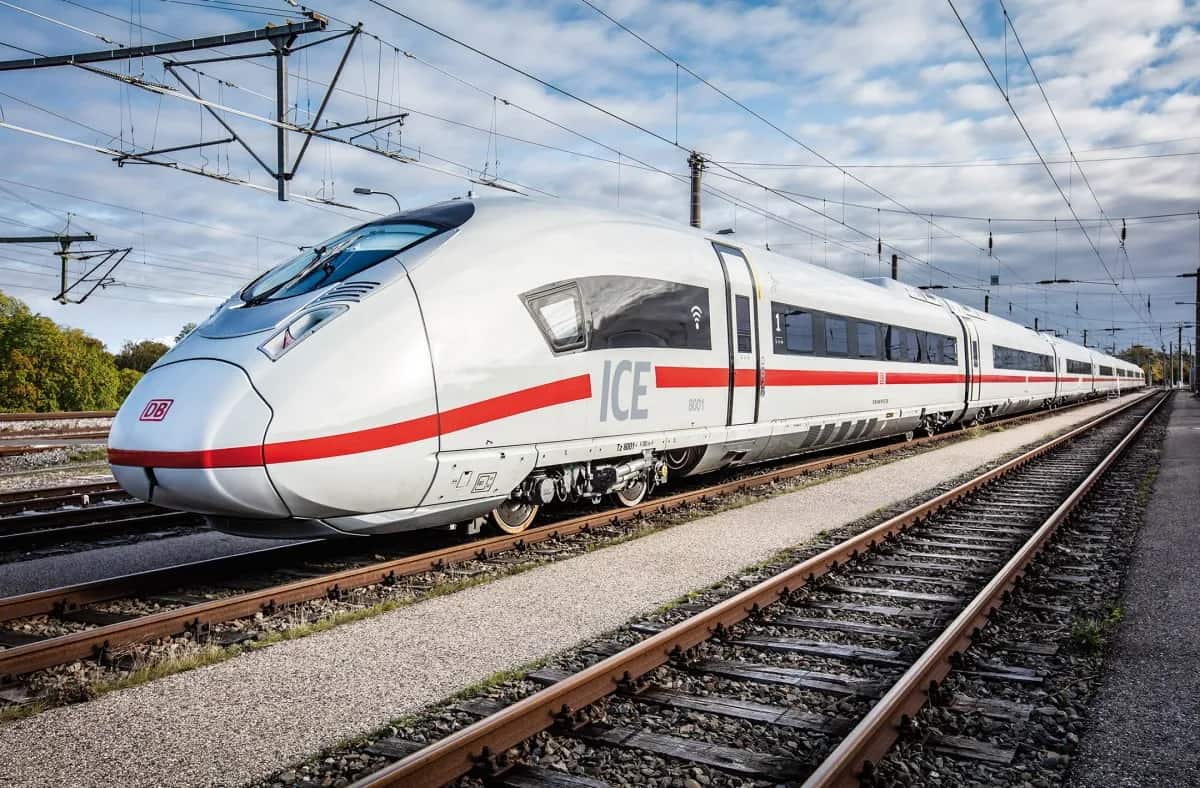
Though France’s TGV is probably the most well known, Germany’s InterCity Express train, or ICE, isn’t far behind. The newest and also fastest addition to this family of trains, ICE3, is capable of traveling at speeds of 330 km/h (205 mph) on the high speed line that connects Cologne to Frankfurt.
During the testing phase of these trains, the speed record was an impressive 368 km/h (229 mph), but the normal operating speed is reduced to 300 km/h. The 330 km/h mark is allowed for the ICE3 when they’re running late, in order to reduce possible delays.
The ICE3 is powered by 16 electric motors distributed throughout the entire length of the train, and deliver 11,000 horsepower.
These are also the base from which the Siemens Velaro trains below have been developed.
9. Siemens Velaro E/AVs 103 (Spain) – 350 km/h / 217 mph
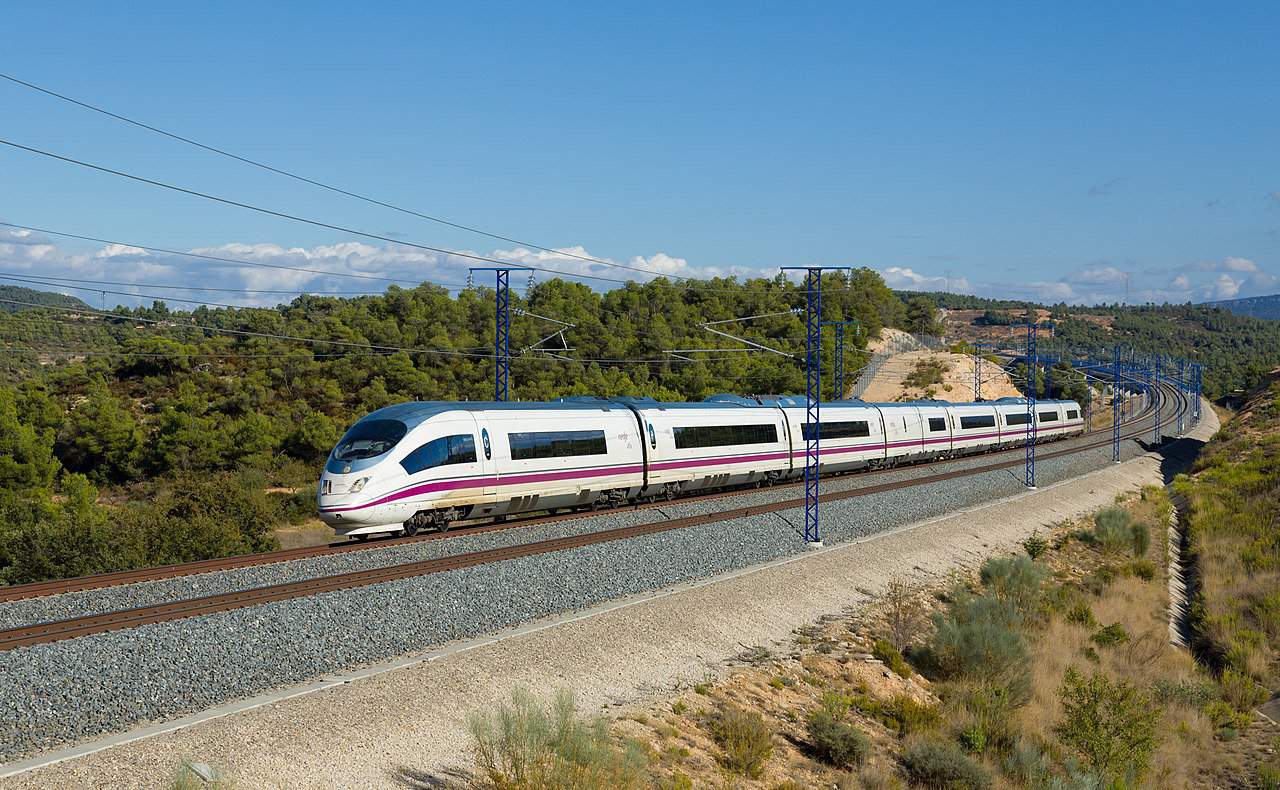
The Siemens Velaro E/AVs 103, also known as AVE S-103, is a Spanish train that runs on the country’s network of long distance lines, which is also the longest in Europe. The network runs from its heart, Madrid, towards other big cities and regions in the country.
The Spanish first used technology borrowed from the French TGV, but their fastest trains in their fleet today consist of the S-103 Talgo, which are similar to the German ICE3, but more powerful, able to reach speeds of 350 km/h (217 mph). When it comes to records, the S-103 reached an incredible 404 km/h (251 mph) in 2006.
The railway network in Spain is probably the one that evolved the most in Europe during the past few decades, transforming long distance travel in Spain from an ordeal with very long delays to one of the best on the entire continent.
8. Talgo 350 (Spain) – 350 km/h / 217 mph
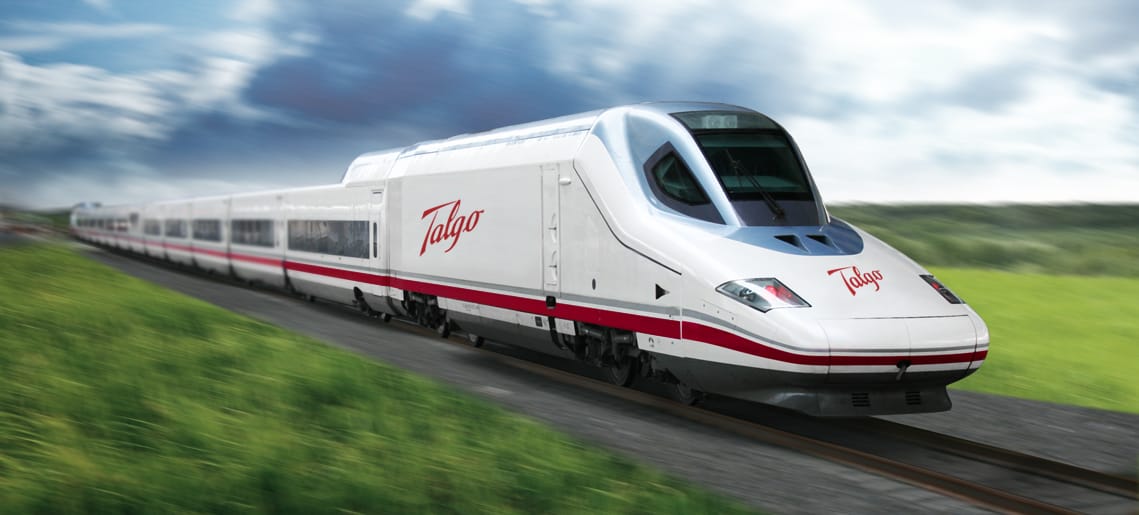
The Talgo 350 is developed by the Spanish company Patentes Talgo (Tren Articulado Ligero Goicoechea Oriol) and is similar in capabilities to the Velaro above, running at the same top speed of 350 km/h. It entered service back in 2005 on the Madrid-Zaragoza-Lleida line.
Due to its elongated nose, it was nicknamed El Pato (Spanish for The Duck). Despite the funny appearance, it was designed to prevent aerodynamic resistance. The cars are lightweight and with a very low center of gravity, and feature anti-overturning and anti-vertical technologies at the couplings between them. They’re also airtight and pressurized, allowing the train to easily pass through tunnels.
These trains were also sold to Saudi Arabia for their Haramain High Speed Rail that we talked about earlier in the post.
7. Avelia Liberty (United States) – 350 km/h / 217 mph
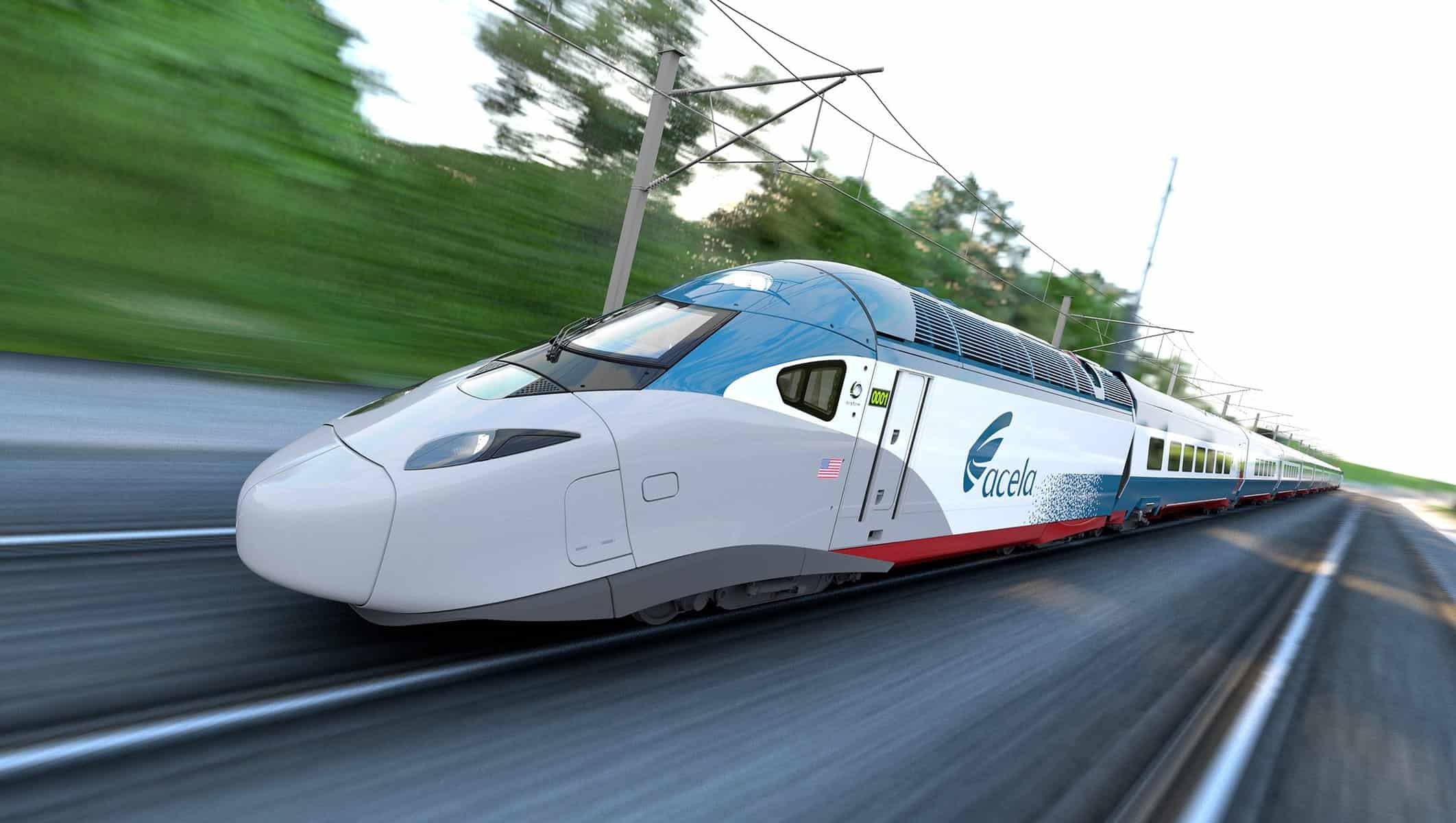
The Avelia Liberty is a high speed train used by Amtrack in the United States. If you find similarities with others on this list, you’re right, because this train was actually built by the French company Alstom, the same one behind the TGV or the Euroduplex.
It was adapted to respect the North American railroad standards and assembled in the United States. Despite the slight differences, the Avelia Liberty is able to reach similar speeds to those of its European counterparts, going as high as 350 km/h (217 mph).
The trains are currently undergoing testing, and are expected to enter passenger service later this year.
6. TGV (France) – 350 km/h / 217 mph
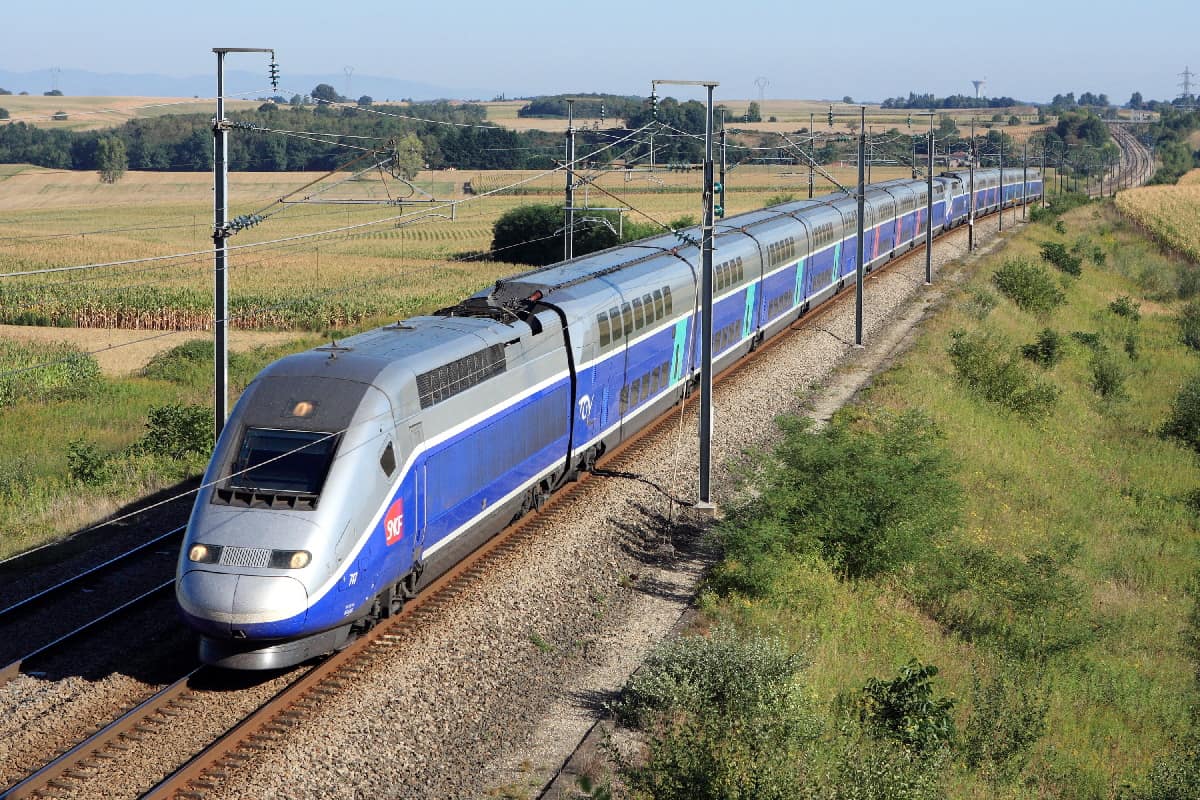
France’s TGV is probably the most famous of the high speed trains, and that’s because it currently holds the record for the world’s fastest conventional train, after a modified version of a TGV reached an incredible speed of 574.8 km/h (357 mph).
Another factor that contributed to the fame of France’s high speed trains is that it’s the first country that had built a high speed railway network in Europe, and it’s still the most successful and most well known on the continent.
With lines that stretch to cover almost all parts of the country, it’s no wonder the French still run the show. Their TGV trains, the normal, unmodified passenger variants, are designed to operate at speeds of up to 350 km/h (217 mph).
5. Frecciarossa 1000 (Italy) – 360 km/h / 224 mph
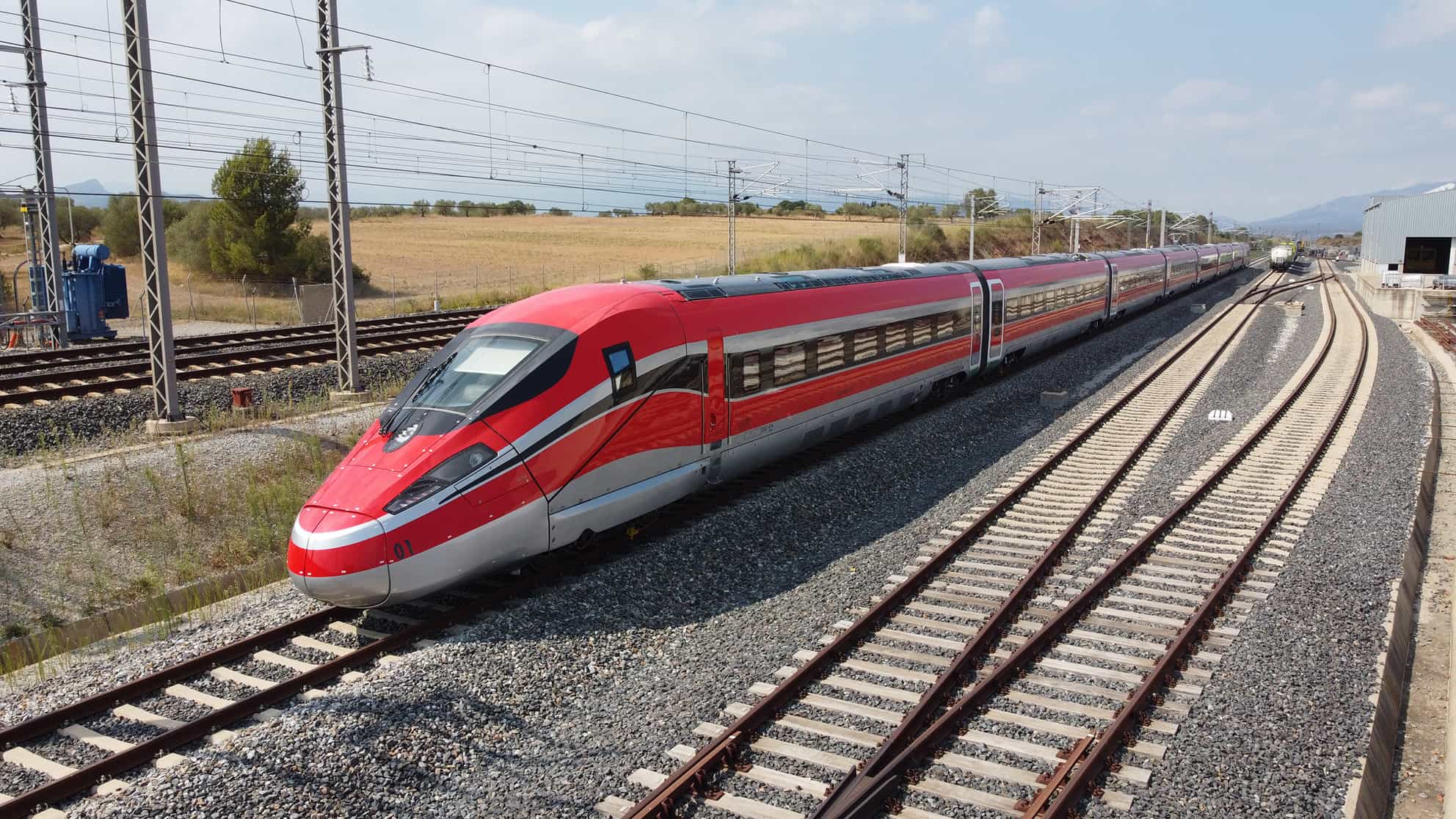
Italy’s Frecciarossa 1000 (Red Arrow) is the newest and fastest train the country has introduced in service, linking the north part of the country with cities such as Rome, Bologna, Naples, or Florence, in the central and southern parts.
The trains were introduced back in 2017, and are capable of reaching speeds of 360 km/h (224 mph) when transporting passengers. During test runs though, one of these trains has managed to reach a speed of 394 km/h, just short of the 400 km/h mark, and way behind the record set by France’s modified TGV.
The Frecciarossa 1000 are 200 meter long and feature a total of 457 seats, divided into four classes, from standard to premium, business and luxury. Due to their success, Spain has ordered a batch of these trains, and the Milan-Paris route has now received Red Arrows as well as an alternative to the older French TGVs that once dominated the line.
4. AGV Italo (Italy) – 360 km/h / 224 mph
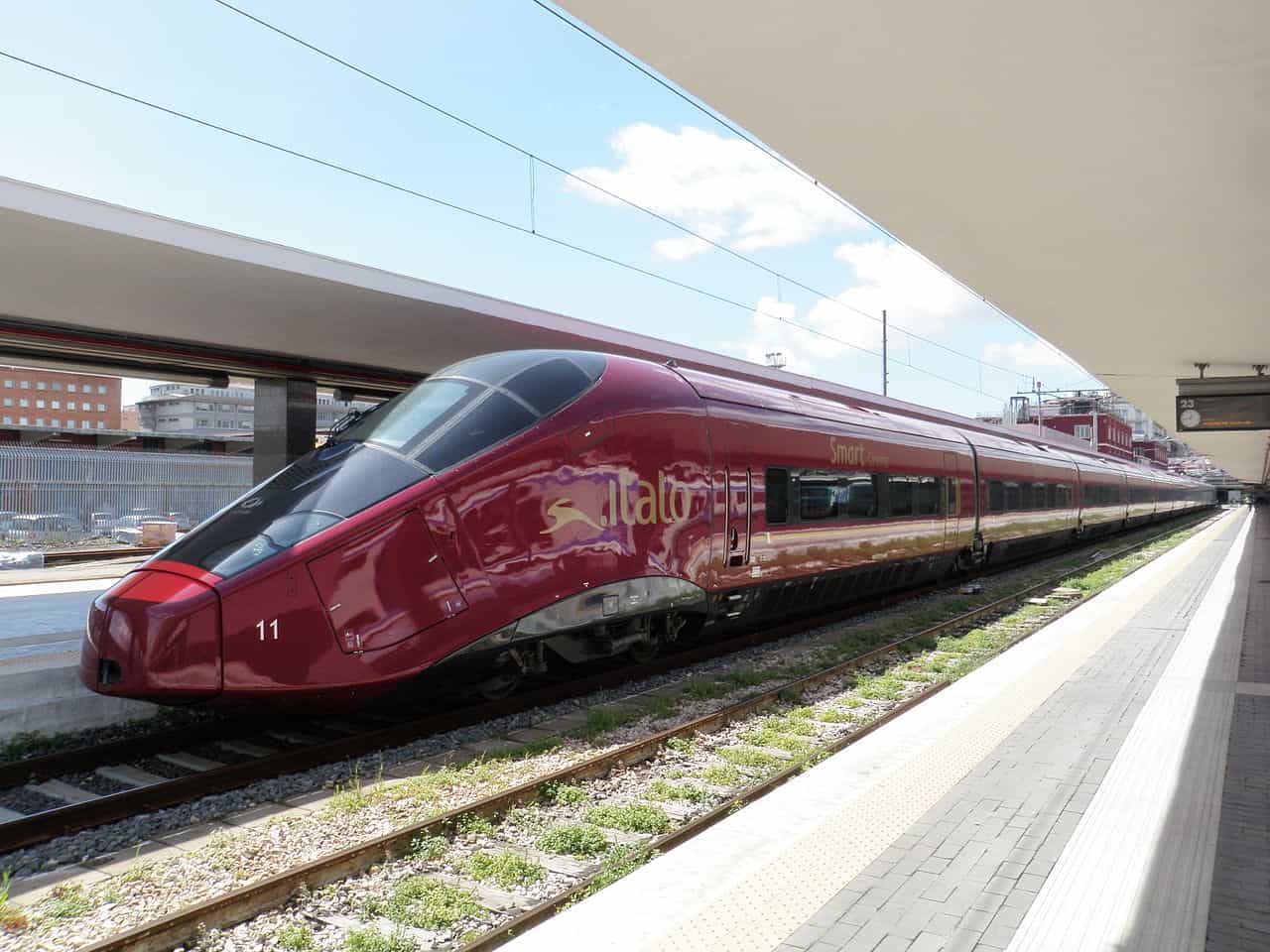
While the Frecciarossa 1000 above is operated by Trenitalia, the AGV Italo is operated by their competitor NTV, with AGV trains built by Alstom.
The AGV Italo, also known as AGV 575, though several years older than its red counterpart, is capable of transporting passengers at the same speeds of 360 km/h (224 mph) as its younger and rival brother above. It entered service with NTV in April 2012, when it transported its first passengers.
AGV Italo trains are comprised of eight cars, half of which feature electric motors, helping distribute the drive system under the entire train, thus eliminating locomotives and increasing space for passengers.
3. Shinkansen CRH380A (China) – 380 km/h / 236mph
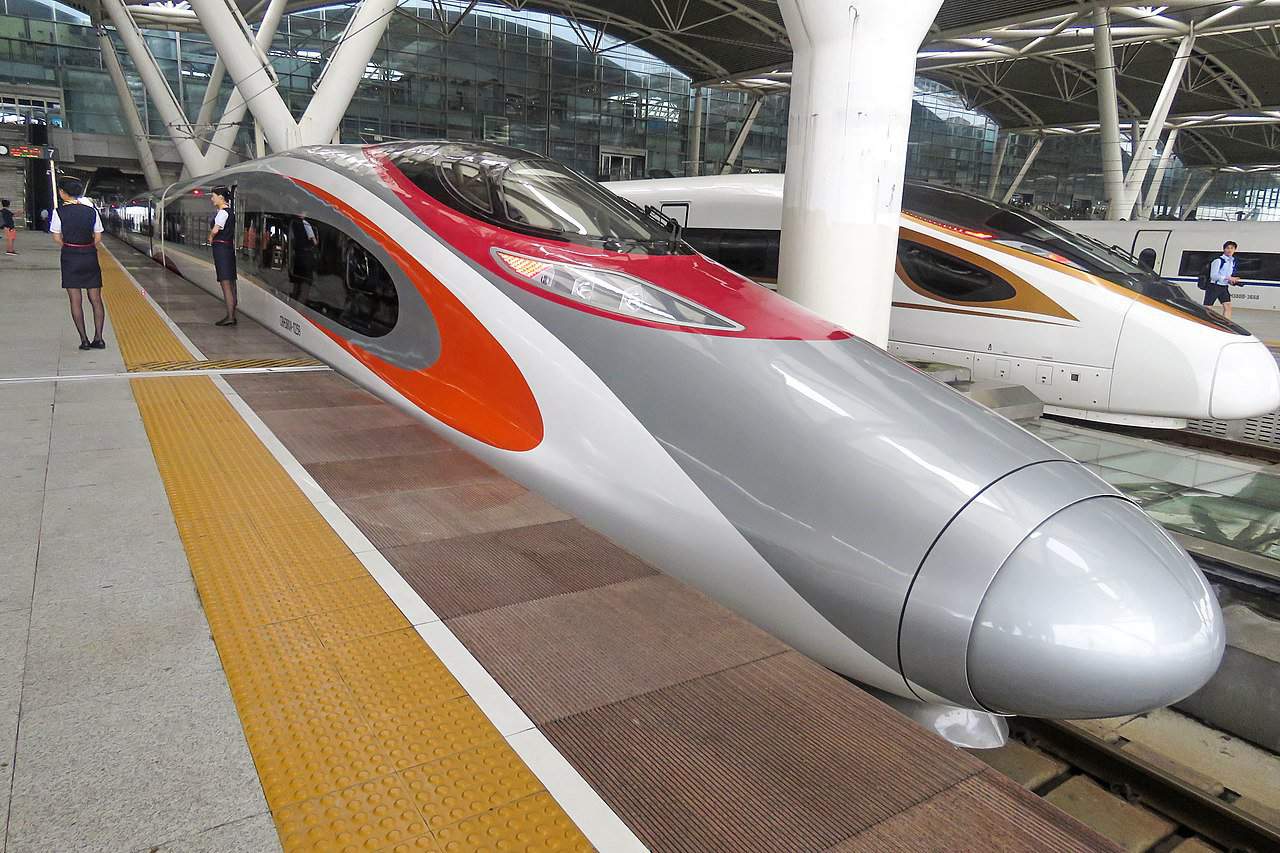
The Shinkansen CRH380A, also known as Hexie, entered service in China on the Beijing-Shanghai high speed railway in 2011. Since then, a number of 577 train sets have been built and are now serving the Chinese railway service.
It’s known as an EMU (electric multiple unit) train, and was developed by CSR Corporation Limited. The top speed is an astonishing 380 km/h (236 mph), with a record of 486 km/h (302 mph) in testing.
2. Fuxing Hao CR400AF/BF (China) – 400 km/h / 249 mph
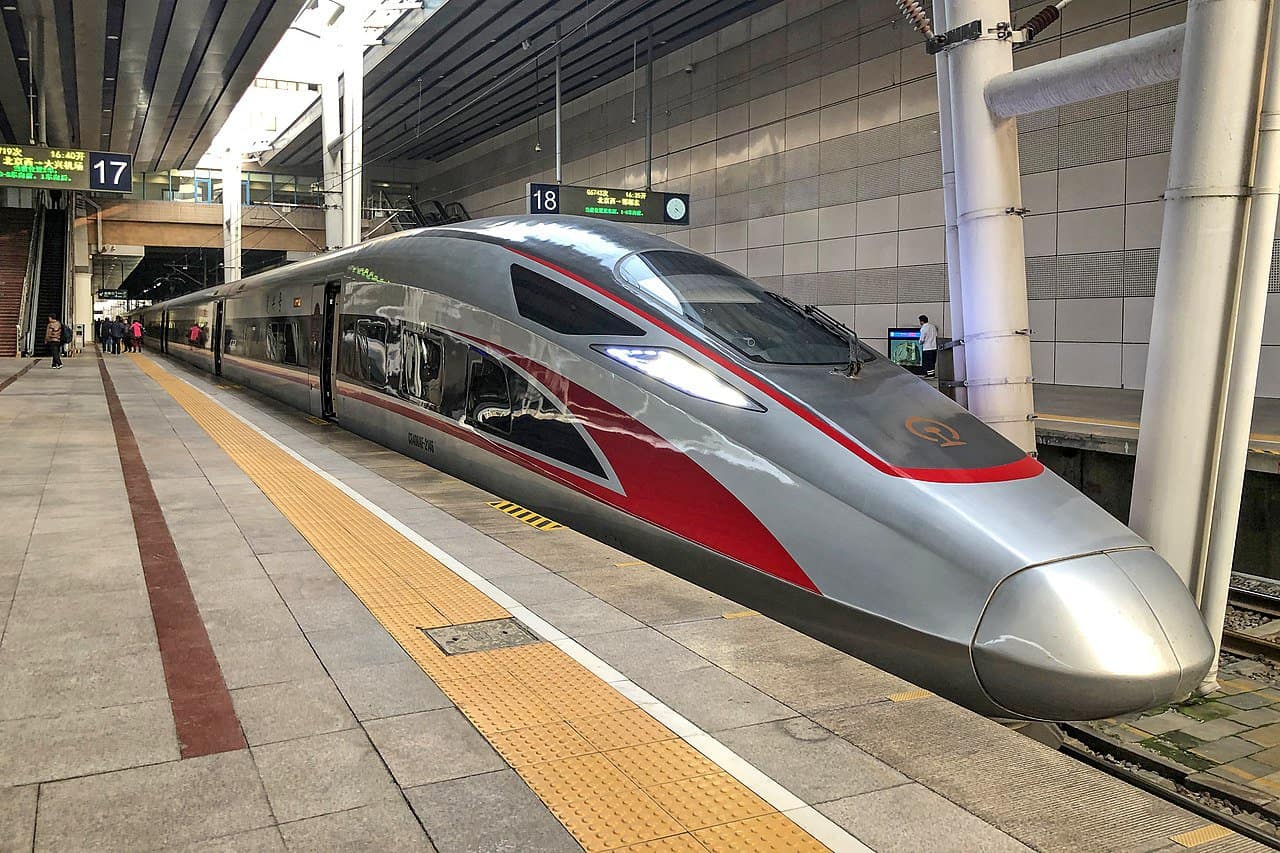
The CR400AF/BF Fuxing Hao (Chinese for rejuvenation) is a more advanced version of the CRH380A Hexie above, capable of transporting passengers even faster than before, with speeds reaching 400 km/h (249 mph).
With China’s rapidly expanding railway network, these high speed trains have greatly aided in greatly reducing the time it takes to traverse the huge country.
Each of these trains has a capacity of 1,200 passengers in a total of 16 cars. The trains are packed with impressive features, among which smart cabins, automatic operation, and smart glass displays to name a few.
1. Shanghai Maglev (China) – 431 km/h / 268 mph
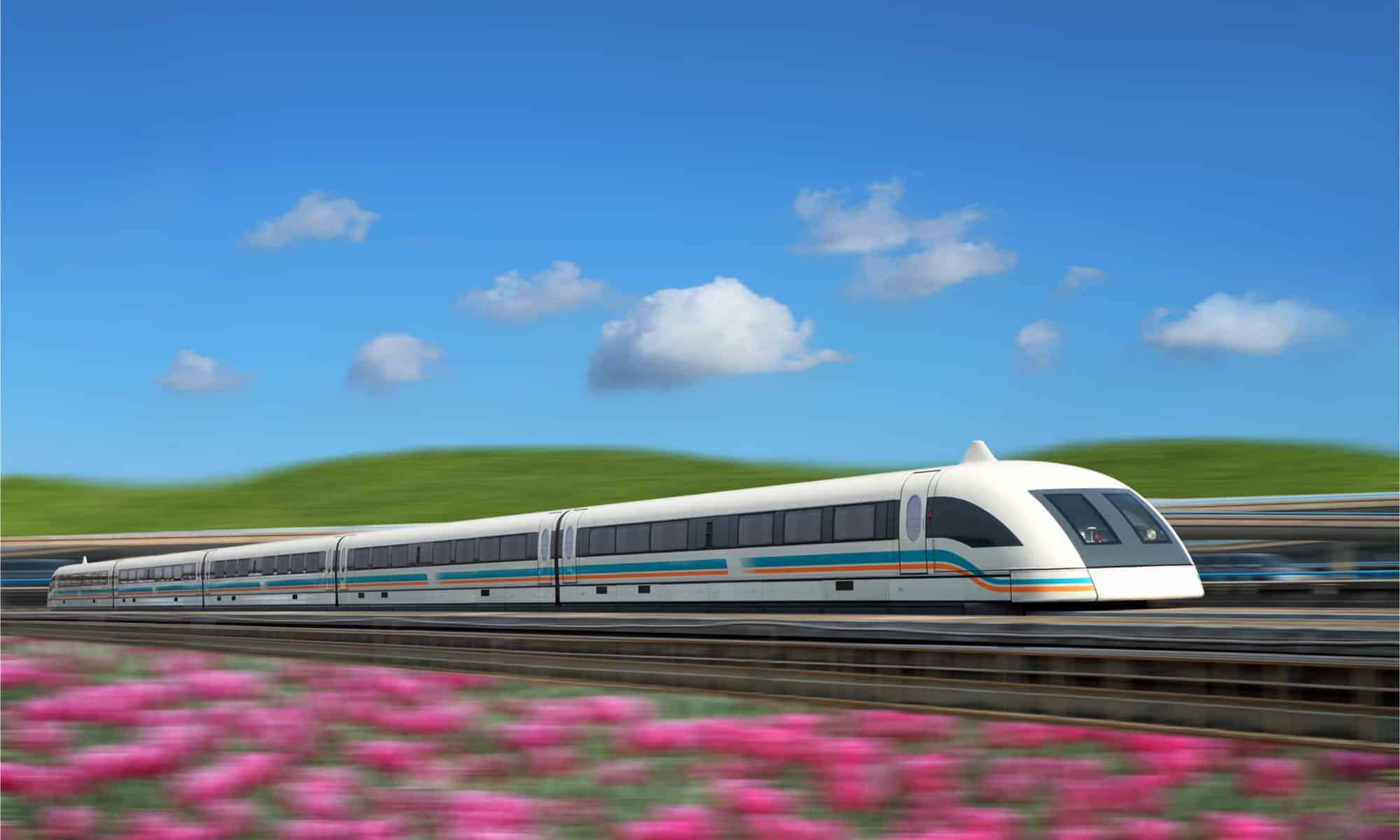
The world’s currently fastest passenger train in operation is the Chinese Shanghai Maglev, able to run at 431 km/h (268 mph). The way it manages to achieve those speeds is through a technology called magnetic levitation, hence the name Maglev.
It’s also the only public train in the world to use such a technology, and China has plans to develop an even faster variant, able to reach speeds of up to 600 km/h (373 mph), and create an entire network of such trains.
Conclusion
The quest for speed is man’s oldest desire and it doesn’t apply only to cars and airplanes. Though not in the spotlights, high speed trains have come a long way, reaching speeds that were unimaginable decades ago.
From the famous French TGV to the unique magnetic levitation train that China uses on a limited 30 km line, there’s plenty of fast trains out there.
Contents
- 15. Eurostar (France/UK) – 300 km/h / 190 mph
- 14. Haramain Western Railway Talgo 350 SRO (Saudi Arabia) – 300 km/h / 190 mph
- 13. Al Boraq TGV Euroduplex (Morocco) – 320 km/h / 200 mph
- 12. Shinkansen E5 Series (Japan) – 320 km/h / 200 mph
- 11. Korail KTX I (South Korea) – 330 km/h / 205 mph
- 10. ICE3 (Germany) – 330 km/h / 205 mph
- 9. Siemens Velaro E/AVs 103 (Spain) – 350 km/h / 217 mph
- 8. Talgo 350 (Spain) – 350 km/h / 217 mph
- 7. Avelia Liberty (United States) – 350 km/h / 217 mph
- 6. TGV (France) – 350 km/h / 217 mph
- 5. Frecciarossa 1000 (Italy) – 360 km/h / 224 mph
- 4. AGV Italo (Italy) – 360 km/h / 224 mph
- 3. Shinkansen CRH380A (China) – 380 km/h / 236mph
- 2. Fuxing Hao CR400AF/BF (China) – 400 km/h / 249 mph
- 1. Shanghai Maglev (China) – 431 km/h / 268 mph












